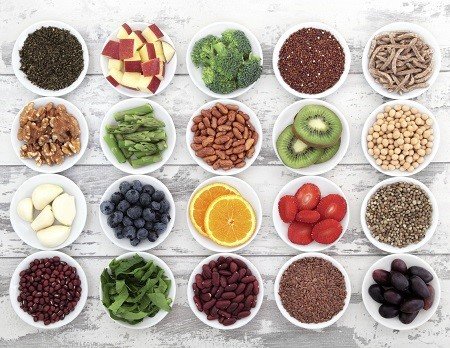Anti-Inflammatory Diet – What You Need to Know
An anti-inflammatory diet has many benefits for your health. Several of its components are rich in antioxidants, a powerful agent in fighting inflammation. Fortunately, you can include these foods in your daily meals without feeling deprived. Listed below are some of its most important components. To make the diet as effective as possible, you must follow certain guidelines. For instance, you should eat at least five different kinds of fruits and vegetables each day. Choose foods that are rich in different colours, as this will ensure that your diet is varied and nutritious.
In addition to being low in inflammatory substances, this diet should also lower the frequency of IBD flares. In this way, you can reduce the frequency of flares and obtain remission. This diet is based on the idea that altered bacterial flora is associated with the development of IBD. By limiting the amount of inflammatory molecules in your body, you can avoid triggering flares. This way, your disease will be less irritable and easier to treat.
Finding an anti-inflammatory diet is easier said than done. First, you need to find out which foods trigger inflammation in you. This will be a challenge, but you will eventually discover which foods are causing inflammation and which ones are not. Using a food sensitivity test will help you narrow down your options. You will need to make the diet work for you in the long run. You’ll also want to consider the timing of your meals. Since eating is one of the most common causes of inflammation, it’s essential that you eat at a time that allows your body to rest.
Anti Inflammatory Diet Tips
If you’re looking for some great anti inflammatory diet tips, you’ve come to the right place. By following an anti inflammatory diet, you will reduce your risk of cancer, cardiovascular disease, and other serious health conditions. But what is an anti inflammatory diet? How can you create one in your own home? Here are some guidelines:
Reduces risk of dying from any cause
While risk factors can raise the risk of death, many can be minimized or completely eliminated by healthy lifestyle choices. Research has shown that certain “good” behaviors are associated with lower mortality rates. Examples include getting plenty of exercise and eating healthy foods. Quitting smoking is another example of minimizing risk. By following these guidelines, we can lower our risk of dying from any cause. So, what exactly can we do to reduce our chances of death?
The CDC suggests that people who exercise more regularly meet physical activity guidelines for men and women and experience a lower risk of death. In fact, individuals who engage in vigorous exercise are 29 percent less likely to die than people who don’t exercise enough. In addition to reducing mortality risk, exercise also has numerous health benefits, such as raising mood and lowering blood pressure. It can even reduce your risk of depression and social isolation.
Reduces risk of dying from cancer
An anti-inflammatory diet may help you live longer by lowering your risk of dying from various diseases, including cardiovascular disease and cancer. In a study of almost 68,273 men and women from Sweden, researchers identified 11 foods that are considered anti-inflammatory, and five foods that are considered pro-inflammatory. Overall, the diet reduced mortality risks by 18% in the highest quartile and by 15% in the lowest quartile. This effect was even stronger among current smokers, with a reduced risk of death from cardiovascular disease of 36% and a decrease of 13% in mortality from cancer.
The study’s strength is its prospective cohort design. The investigators measured dietary intake using a standardized questionnaire that covers the major food groups Americans consume. The researchers also adjusted the results for weight and other co-variables, such as BMI and smoking status. Moreover, the researchers evaluated the impact of the anti-inflammatory diet on the risk of dying from cancer using a multivariable model, which reduced the significance of the association.
Another study has looked at the post-diagnosis dietary inflammatory potential of a particular diet. It found an association between an anti-inflammatory diet and survival in invasive breast cancer patients. However, a similar study conducted in Italy did not find a significant association between dietary inflammatory potential and overall survival in breast cancer patients. The researchers noted that such studies are subject to selection bias and information bias.
Reduces risk of dying from cardiovascular disease
A healthier lifestyle reduces the risk of cardiovascular disease. It has been found that this lifestyle can prevent as many as 80% of coronary artery disease, 50% of ischemic strokes, and seventy percent of premature deaths. According to the World Health Organization, these diseases are the leading cause of death and morbidity around the world. The WHO has set a goal to reduce the number of premature deaths related to NCDs by twenty-five percent by the year 2025.
There are many risk factors involved with the development of cardiovascular disease, but some are more prevalent in some communities than others. The American Heart Association and Circulation have released scientific statements on social determinants of cardiovascular disease. One study titled Barr DA described geographic disparity as a societal issue and how geographic disparities affect the incidence of heart disease. The researchers defined cardiovascular events as heart attacks, strokes, and hospitalizations.
Although the overall incidence of cardiovascular disease has declined, the rate has remained almost unchanged in people younger than 65. Despite the improvements in health care, heart disease and stroke remain the leading cause of death in the United States. For example, women are more likely to die of heart disease than men, and blacks are twice as likely as whites to develop the disease. Interestingly, the risk of death from cardiovascular disease differs between different ethnic groups. South Asians and East Asians have lower rates than whites, while African Americans have a higher rate.












+ There are no comments
Add yours